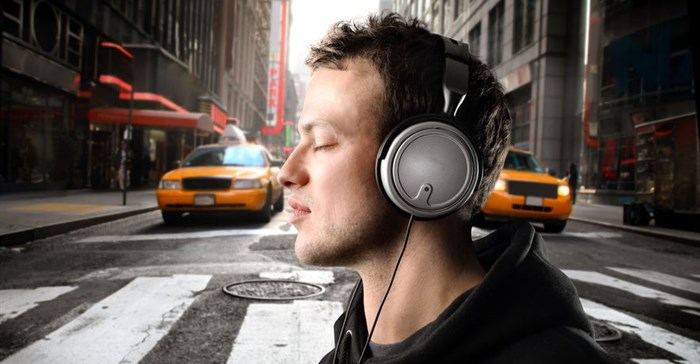
Related
Top stories





Marketing & MediaTidal Rave Festival: How a youth festival is building Africa’s cultural infrastructure
BA:KO by EchoHouse 4 minutes

More news







Where in 2005 it was still common to buy your favourite band's CD and wait for their music video to come on TV, by 2015 this notion is largely archaic, particularly among advertising's most coveted prize - the elusive, affluent millennial.
Meanwhile, at roughly the same time that musicians lost their traditional captive audiences and revenue streams, advertisers suffered a remarkably similar fate. Why? Because the same audience who was willing to wait for their favourite song to come on TV or radio is the same audience that was willing sit through an entire three-minute ad break.

Misery acquaints us with strange bedfellows. And who could be stranger bedfellows than the musician and the brand? After all, wasn't it the musician who always told us to hate the brand, to hate "the man?" But, like it or not, these shifting tectonics caused by ever-growing Internet reach are forcing both sides to reconsider this age-old feud. Artists need money for promotional content; advertisers need audiences. Artists have access to audiences - in particular, the young, internet-based, ad-blocking audiences that most advertisers now struggle to reach. Advertisers have access to clients, who have access to the budgets that artists need to produce their music videos, documentaries and other promotional content.
I've simplified things to make my point, but we all know that the specifics are a little more nuanced and complicated: artists work hard to earn the respect of their audiences, and this respect can evaporate overnight if audiences feel like they're being pawned off as advert-fodder to corporations - supposedly the traditional enemies of artists. If we think of the Venn diagram of "artist" and "brand," the area where they overlap is a very thin but also very fertile strip of land. To get to that land takes a carefully considered strategy, based on insight into both music and advertising.
Let's look at what, in my opinion, are three of the best such marriages between artists and brands as seen in South Africa. The first example, from 2012, is the simplest: Die Antwoord's Baby's on Fire, produced by Egg Films, where an ironic, tongue-in-cheek product placement for Red Bull saw the brand being integrated into the music video in a seamless way, exactly because it was so jarring. Instead of trying to hide the product in the content, they brought the content to a standstill in order to awkwardly, sarcastically, force the audience to watch Ninja gulp down an entire can of Red Bull.
That oh-so-simple yet carefully treated product placement would be the thing that elevated a small-budget video to a big-budget video, particularly by African standards. The result? 37 million views on YouTube, which at the time was the highest reach Die Antwoord had achieved. To advertisers I ask: what would you traditionally have had to pay for access to 37 million viewers? To musicians I ask: what would you traditionally have had to do to secure that kind of budget for your video?
My second example, Ballantine's Black Coffee's Human Orchestra, comes in two years later in 2014 and is something of a reversal of Die Antwoord's situation. Here things started with the brand who, already known for their association with electronic music, knew they had X amount to spend on a piece of branded content and knew they wanted it to be associated with a well-known musician.
Produced by UK-based Novemba through M&C Saatchi, Human Orchestra presented the producer-DJ Black Coffee as a conductor of a 40-person "human orchestra." This reimagining of one of his famous tracks, along with beautifully filmed insights into his daily life in Johannesburg, offered Black Coffee promotional content worth well over a million rand in exchange for his name to appear alongside a brand that most electronic musicians already admire anyway.
My third and most recent example was produced in mid-2015 for Castle Lite, who are also no stranger to artist collaborations. Over the past decade the brand has featured the likes of Vanilla Ice, MOP and MC Hammer, but the piece I want to look at - Ziyabanda featuring Stilo, produced by Arcade Content - is a little different to their traditional approach. Instead of spending most of their budget on paying an artist to endorse a brand, and then still having to pay for producing the actual content, this time the client decided to rather spend all of that money on the content. How did this work?
Via their agency, Ogilvy Cape Town, Castle Lite approached a talented rising star - Stilo Magodile - and offered him a video budget that most emerging artists could only dream of. Stilo agreed, and this is where the hard work began. With a few weeks of intensive creative back and forth between the artist, client, agency and Arcade, we developed and produced Ziyabanda. The result? A highly effective hybrid that is as much an ad as it is a music video. It went on to rack up over 250,000 views on YouTube, and has yielded tangible results for both the musician and the brand, all at a fraction of the cost of a traditional celebrity endorsement plus the production bill.
You may be starting to see the trend emerging, but to make it crystal clear I'll cite one more example, this time from the US:
Just over a month ago, Honda uploaded Hip-Hop's Raider of the Lost Ark on their "Honda Stage" platform. This film is different to my previous three examples because in this instance - wait for it - the artist is unknown. Completely and utterly unknown. Yet this piece about 17-year-old rapper "Afro" has gone on to garner over 11 million views across Facebook and YouTube. What did this content cost the client? I would surmise that it cost them (a) what they paid for the insight to find this interesting kid, plus (b) the budget for a mini-documentary production, which any producer will attest is a fraction of traditional TV commercial spend. So I would estimate that we're talking about 11 million views in exchange for, say, less than half a million rand.
We've looked at less than a handful of different ways that brands and artists can work together, and new, successful approaches are emerging every day. What's clear is that, as the effectiveness of traditional celebrity endorsements and product placements continue to erode, the need for smart, alternative ways of reaching internet-based niche audiences is only going to increase in 2016 and beyond.
One of the best ways of doing this is through cohesive, focused marriages between advertising and music, to the point where the one becomes indistinguishable from the other. This approach is going to win not only because it's more cost effective than traditional advertising, but also because it doesn't look like traditional advertising - which, as we all know, is the one thing that young people avoid at all costs.
